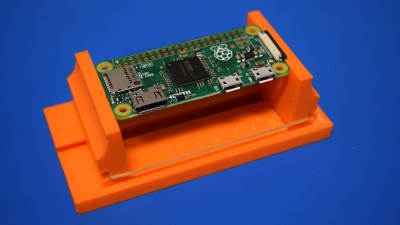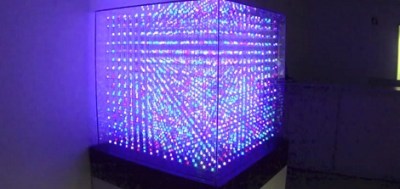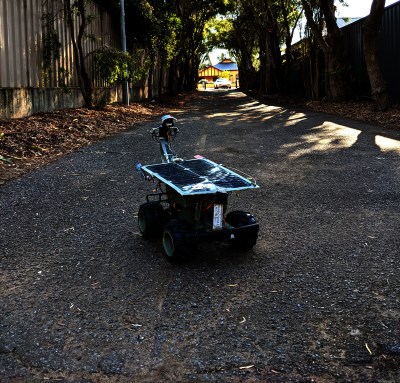
We’re blessed to have such a great community at Hackaday. Our tipline often overfloweth with all manner of projects and builds of all stripes. We see it all here, from beginners just starting out with their first Arduino to diehard hackers executing daringly complex builds in their downtime, and everything in between.
If you’re sitting there in the grandstands, watching in awe, you might wonder what it takes to grace these hallowed black pages. In life, nothing is guaranteed, but I’ve been specially authorised to share with you a few tips that can maximise your chances of seeing your project on Hackaday.
First Thing’s First: Tell People About Your Work
To write about your project at all, first we have to be able to find it! Don’t be bashful, tell us about it by sending a tip directly to the Hackaday writers!
We like to share projects with readers, and that means they need to be able to access them, too. Thus, having the details of your escapades in a publicly accessible format is key. A great place to write about your project is, of course, Hackaday.io! For the low, low price of free, you can post pictures and details about what you’ve done. There’s plenty of fun contests to enter your project into, as well.
But look, anywhere you are able to publish full details in a publicly-accessible way will work. Basically, if it comes with a link we can share with everyone, you’re good to go!
A Simple Thing Can Be as Interesting as a Tour de Force

You could be forgiven for thinking the only way to glory is by having the most amazing, expensive, wonderful, and unique project ever, but you’d be quite mistaken. Are you excited about? We will be too!
We love an original or impressive build as much as anyone else, but that’s not all that matters. There’s also great value in the bread and butter projects that solve real problems people face every day. Your project might be reinventing the garage door opener, for example, but you also might have found a nifty way to do it, or a hack that makes it way more usable than it was before. It also spurs the creative juices in everyone else that reads it, allowing them to become more powerful from the benefit of your experiences. So, just because your project isn’t the world’s first robot lander on Pluto, we still want to take a look!
We Want the Gory Details!
The fact is, Hackaday writers are people, just like you and me. They’re tasked with the job of finding cool projects out in the wild that our readers would like to know about. To do this, we need as much info about your build as possible. We need a great image to capture the gist of the project, and we appreciate a demo video whenever possible. Ask yourself if you’ve adequately answered the what, the why, and the how.
The What is simple – what is it? Is it a radio controlled car? A fire-fighting drone? A new Python library that automatically hacks the Library of Congress to create an eclectic 1870s playlist for your anachronistic keg party? Your project post, or video, or whatever it is, should clearly explain what the project is as quickly and clearly as possible.

Why is just as important. The substance of the Why, of course, is absolutely up to your discretion. We heartily accept “because it’s fun” or “to see if we could” as much as we accept “I was sick of my spouse reversing into letterboxes”.
The How is something that’s often forgotten, and yet is so vital to showing the most interesting parts of your work. You could have a great video of your amazing mag-lev LED sphere, but if you don’t explain how it’s done, it’s likely to get passed over. Hackaday articles aren’t just about saying “hey look, this is cool” – we’re about learning new things and educating each other through our work.
Pictures Are Worth A Lot Of Words

Finally, pictures really are important. Hackaday writers are adept at using every tool available to cajole even the dimmest, darkest, most poorly cropped images into usable headers for articles, but even their elite talents can only stretch so far. Without a header photo, there’s no article, so it’s of primary importance to get this right.
The best thing you can do is to have a series of photos showing off the project. Just don’t forget to capture an overview image that shows off the build with the project centered in the frame. Leave plenty of space around the project in all directions so that it can be cropped in various ways as needed.

Often we use images taken from videos. If you’re filming your project, we love it if there’s a few solid seconds of the item of interest, nicely framed and well lit with slow or minimal camera movement. Get those glamour shots into your video – your audience will love them and so will we!
Of course, if your project is code, or something not visually representable, often there are measures that can be taken. For example, a new library for working with GPIO on the Raspberry Pi in Python might get an image made up of the relevant logos to quickly indicate the topic to the reader. If your project falls into this category, you needn’t worry. But for everything else, please, take some nice clear photos and frame them well!
Final Thoughts
Overall, nothing can guarantee that the world will fall in love with your project or that it will make the pages of Hackaday. We can’t cover absolutely everything, and sometimes there’s just too much out there (a great problem to have). If your project doesn’t get picked up you can always send a link to us again in case we missed it.
I hope you found this helpful in prompting you to explain your project thoroughly, and to post excellent images of it. I wrote it to help eager hackers and makers to understand what we look for in a great project, as well as to share some general tips on how to best present your project for any technical audience. In summary, tell us what, why, and how, and show us what we’re going to get excited about, and you’ll go far. Happy hacking!
0 Commentaires